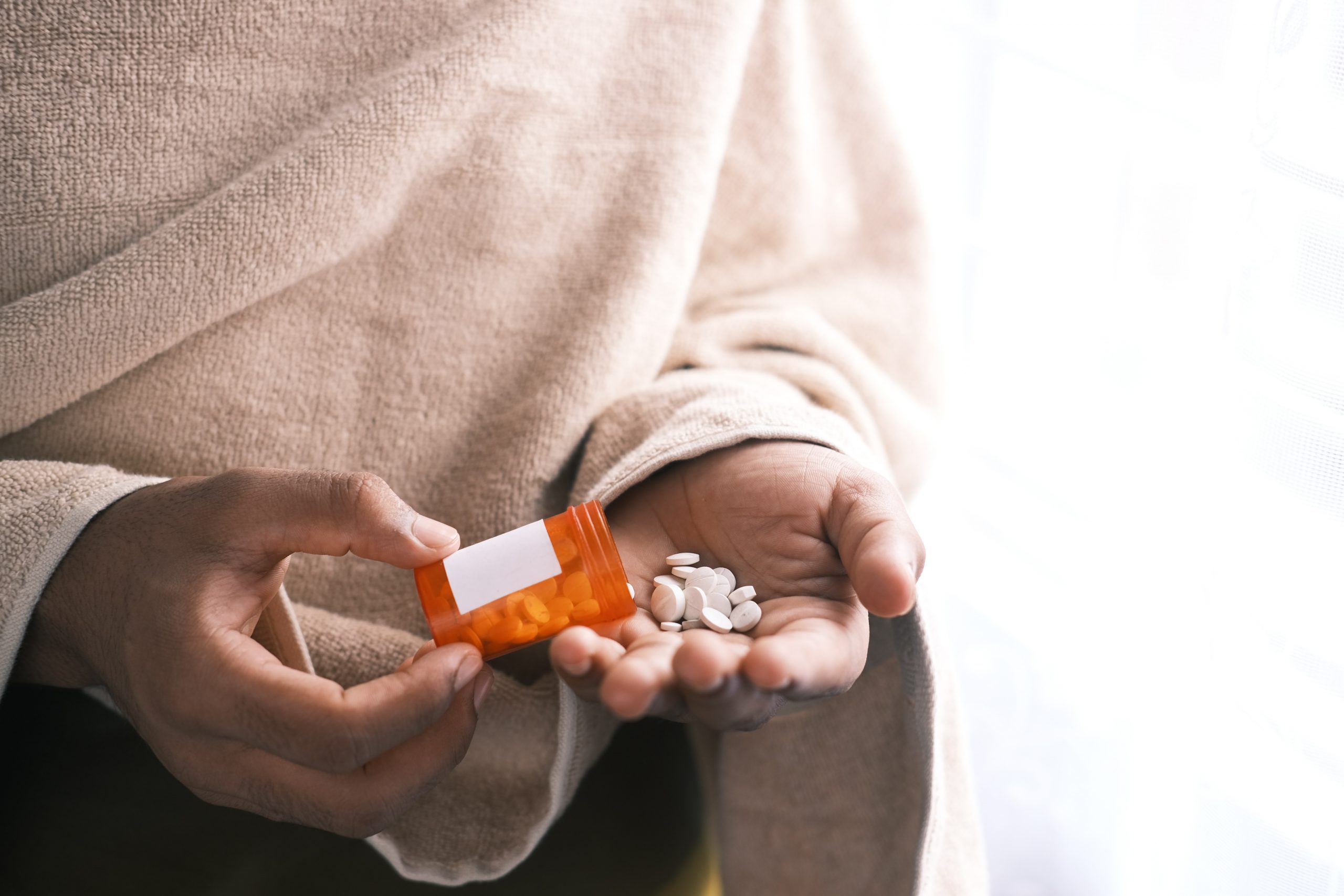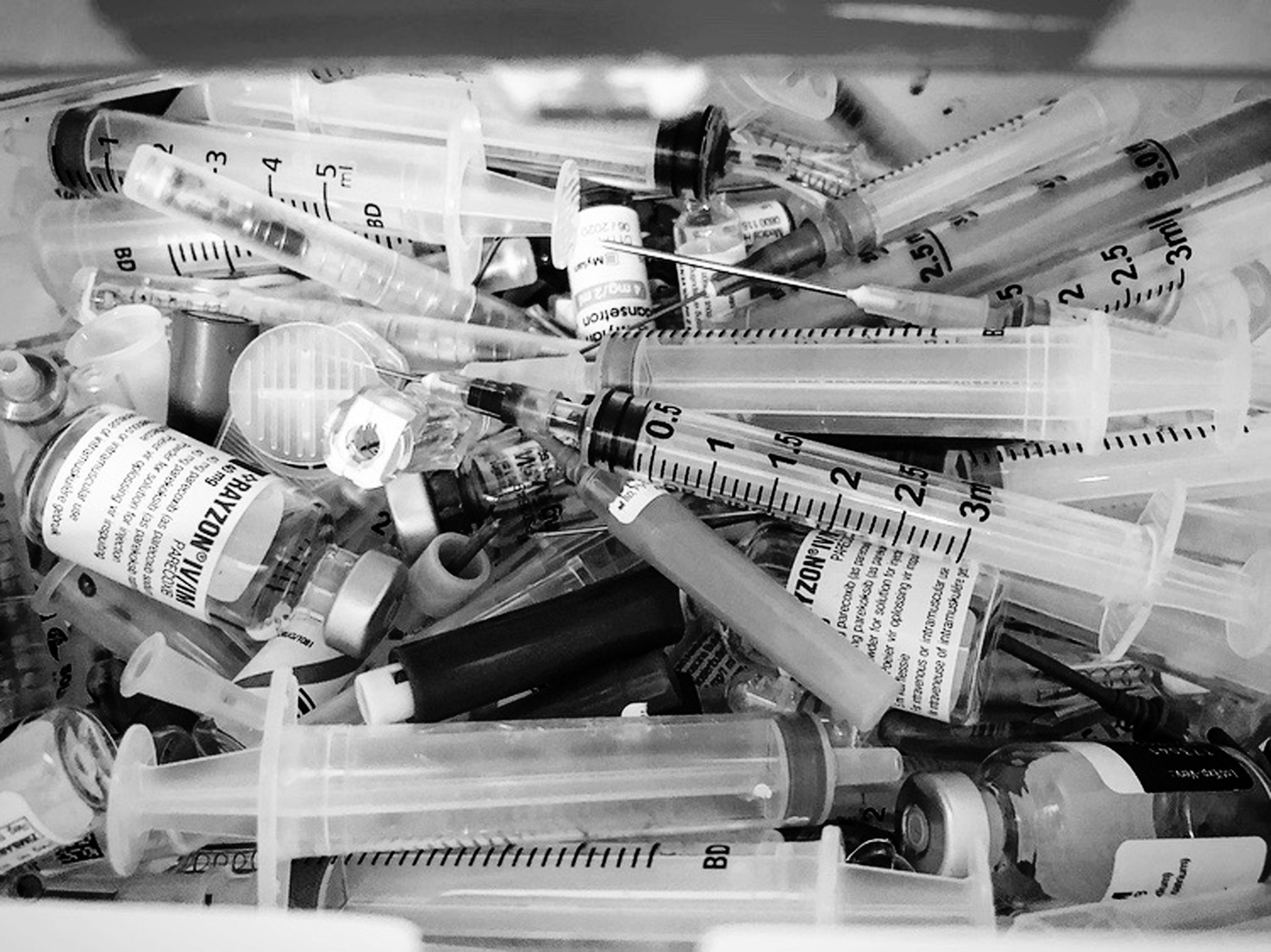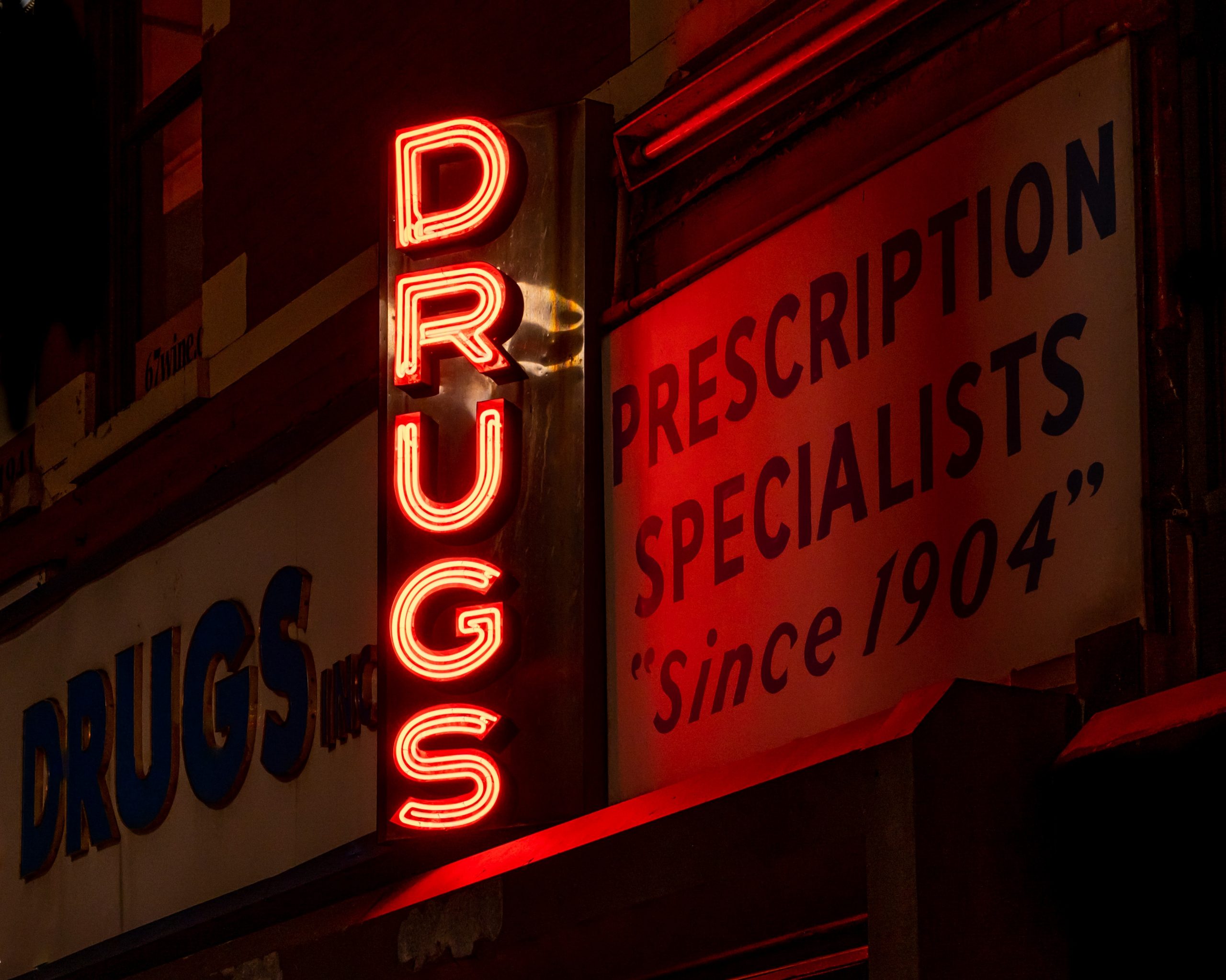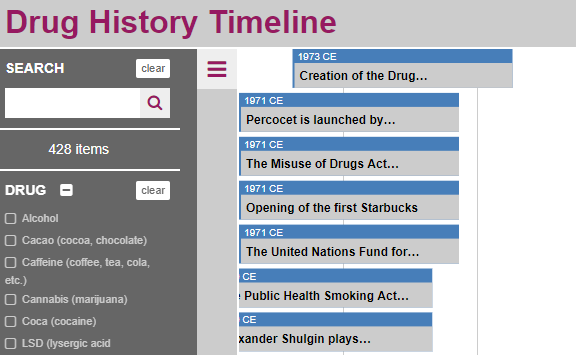1 Drug Use and Misuse Overview
Introduction
People of all ages are impacted by the use and misuse of drugs. With use and misuse we have seen an increase in medical costs, loss of school and work productivity and impacts on individuals, families and communities. Understanding the implications drugs can have on all of these concerns, will help you understanding the risks you take when it comes to drug and drug use. The impacts drugs can have make understanding them that much more important.
Learning Objectives
- Identify types of drugs and differentiate between legal and illegal substances
- Understand how drugs are taken and administered
- Identify drug users and why they use drugs
- Explain the difference between use, misuse, and dependence
- Demonstrate familiarity with drug use policies and laws and the impacts they have on legal and illegal use
Image 1.1 – Picture of Various Pills

Learning Content
Have you thought about what the word “drug” means? When most of us think of drugs we think of illegal substances, prescription and over-the-counter medications, tobacco and alcohol.
The World Health Organization (1994) says that “drug” is a “a term of varied usage:”
- medicine it refers to any substance with the potential to prevent or cure disease or enhance physical or mental welfare.
- pharmacology it refers to any chemical agent that alters the biochemical physiology processes of tissue or organisms.
- common usage the term often refers specifically to psychoactive drugs and often illicit drugs which have non-medical use in addition to any medical use.”
Most drugs carry the risk of affecting you in ways that can impact your ability to get along with others, to work, to cope with things going on in your life and to think rationally. The effects that drugs produce are also influenced by society’s perception of them. Think about people who use illegal drugs—are they viewed in the same way as people who are using legal drugs?
Drugs can alter thinking and judgement in a person and can lead to health risks associated with misuse, dependency and addiction.
People use drugs for many reasons. Individuals want to fit in, they want to feel better, they want to perform better at work, in school and in sports. Drugs may make you want to use them more. What may have started as a way to feel better or even as a way to escape can quickly turn into misuse because your brain and body need the drug to feel normal.
Drug use in the U.S. is pervasive. Drug use is a valid societal concern because of its effects on individuals, families and communities. Exploring drugs and drug misuse further will encourage a better understanding of drugs and the implications they can have.
Let’s start by thinking about sugar. Sugar is not considered a drug and most foods containing sugar are not addictive. But sugar can have a similar impact on the brain as drugs do. Watch this video on How Sugar Affects the Brain to gain a perspective on how easily you can become addicted to sweets and treats, then ask yourself if I can become addicted to sugar can I become addicted to drugs? When considering how to define a drug, where do cultures draw the line? And why? Is food a drug?
Video 1.1 – How Sugar Affects the Brain
Types of Drugs
Table 1.1 – Commonly Used Drugs Chart
Critical Thinking
Starting with types of drugs, explore the chart above and review the information provided on these various drugs. Spend time reviewing the chart above, and identify 10 drugs you are interested in learning more about. Make notes on these drugs for your knowledge. Think about these drugs like you did about sugar. What are the risks with using the drug? What will be the implications of use if I use a drug like I might consume sugar? Is it possible to become addicted?
The important thing here is to understand there are risks with many things in life; however, use, misuse, and addiction are concerns that everyone should think about when it comes to drugs, drug misuse, and putting things into our body.
Legal drugs include over-the-counter medications, prescription drugs, alcohol, tobacco, caffeine and marijuana.
Illegal drugs are drugs that are not prescribed by a licensed medical professional and drugs that are identified under the Controlled Substances Act.
There are many groupings of drugs and they typically fall into one of these categories:
NSAIDS: Non-Steroidal Anti-Inflammatory Drugs like acetaminophen and ibuprofen
Analgesics: drugs that relieve pain
Antibiotics: drugs used to treat disease caused by bacteria
Antiseptics: best known as mouthwash; typically used to treat the oral cavity
Antiviral: drugs used to treat disease caused by viruses
Designer Drugs: synthetic version of controlled substances
Over-the-counter: drugs that can be purchased without a prescription from a medical professional; sold legally in drug stores and pharmacies
Prescription Drugs: drugs that are prescribed to a specific person by their medical care provider
Psychoactive Drugs: drugs that change brain function resulting in alterations in perception, mood and consciousness
Psychotherapeutic Drugs: drugs that are prescribed to help relieve symptoms associated with anxiety, depression and mental disorders
Psychotropic Drugs: drugs that alter chemical levels in the brain which impact mood and behavior
Recreational Drugs: typically known as psychoactive drugs; used to enhance recreation and experimentation
Check Your Knowledge
How Drugs are Taken/Administered
Images 1.2 – Pills in Hand

Image 1.3 – Syringes

There are three primary ways that drugs are taken into the body. Drugs are typically administered orally, by injection and through inhalation. Oral administration occurs through the mouth. Taking drugs orally can be difficult as the drug’s absorption in the gastrointestinal tract can cause the drug to take longer to work. With injection, that happens via a hypodermic syringe or IV into a vein, muscle or under the skin, so the impact of the drug is much more rapid and the effects of the use can be seen more quickly. Inhalation occurs through smoking or huffing. This type of use is rapid and very efficient, the effects of use are seen quickly. Other ways that drugs can get into the body include topically (via mucous membranes) and rectally or vaginally (via suppositories).
Uses of Drugs
Drugs can be thought of in many ways. Drugs are good, drugs are bad. Drugs are socially acceptable. Drugs are socially unacceptable. Drugs are conventional. Drugs are deviant. The effects that drugs produce are influenced by our perception of them as well as the perception society has about their use. When people consider drug use, they typically use drugs for one of these reasons:
- Medical: used to treat and cure illness, disease, or symptoms that individuals have
- Spiritual: used mostly in the hallucinogen, stimulant or sedative category of drugs; used in religious and spiritual settings
- Self-Help: typically used to improve something about the user, such as brain concentration and physical abilities
- Recreational: used to help enhance euphoric effects typically associated with use of psychoactive or other illegal drugs
Patterns of Drug Taking
Many people use drugs for many reasons. Often, one set of problems is exchanged for another, possibly leading to the individual not even knowing how a cycle of use happened. Understanding the patterns of drug taking can help you understand why people use drugs and give you insight into the risks and concerns associated with drug taking.
There are five patterns of drug taking.
The patterns of drug taking are experimental use, social-recreational use, circumstantial use, intensified use, and compulsive use. Looking at these further will give you the insight you need to understand the different types of drug taking.
Image 1.4 – Drug Store Sign at Night

Table 1.2 – Drug Taking Patterns and Explanations
| Patterns of Drug Taking/Type of Drug Use | Explanation |
|---|---|
| Experimental Use | Having 10 or fewer experiences with one drug; usually the first stage of substance use. This is when people are exploring what drugs are, their personal reaction to drugs, and the social aspects of drug. This type of use is often very casual and relatively safe. Many people experiment with gateway drugs (alcohol, tobacco, caffeine and marijuana) first. |
| Social Recreational Use |
The most common type of drug use; used socially or casually to enhance a social occasion, such as a music event or being at a bar or party. There is risk of overdose and health complications due to binge use and use of multiple drugs (e.g., alcohol and marijuana) at the same time. |
| Circumstantial Use | Situational type of use, where a drug is taken for a short duration to deal with an immediate pressure or distress in a person’s life. There is a risk of addiction and misuse, as use may increase if the pressure or distress is not resolved while taking the drug. |
| Intensified Use | Intensified use, similar to circumstantial use, but more intense and can involve binge using where a user takes an excessive amount of a drug at one time. |
| Compulsive Use | Involves a lifestyle of use revolving around drugs; the user obsessively and compulsively uses drugs. With this type of use, dependence and addiction occur. |
Check Your Knowledge
Drug Misuse Risks and Concerns
Infographic 1.1 – The Cycle of Addiction

A substance-use disorder is defined as a medical illness in which the person is unable to stop using a drug even though it causes health and social problems in their life. Severe substance-use disorders are also known as addiction.
The infographic above helps explain how drug users can progress from drug use to addiction. This progression can happen over a short period of time or it can take many years. Misuse is defined as drug use that is illegal or not aligned with medical use guidelines. Most drug use happens in the experimental and social recreational drug-taking patterns. The hope is that drug use does not lead to misuse because the user recognizes the need to break their use patterns and or seek help. Misuse begins with recurrent drug use. Often individuals fail to follow through on obligations at work, home and school. They may use substances when they know the use can be physically hazardous. They often have legal problems associated with the drug use and continued social and interpersonal problems despite knowing their drug use is a concern. It is really hard to define what misuse is because it isn’t always nicely wrapped into one package.
Substance addiction behaviors often include one or more of the following:
- loss of control over drug use
- continuation of use despite harm to oneself and others
- compulsive use and cravings that are often the sole focus of the user
The 4 C’s of addiction and the examples provided below will help you better understand addiction and addiction risks.
- Control, often looked at as loss of control by the user. The user might say this about themselves: “I try to drink only one day a week, but I end up drinking everyday.”
- Continued use when the user keeps on using even though they know there are harmful consequences. The user might say this about themselves: “I know my alcohol use caused me to lose my job, but I cannot stop drinking alcohol.”
- Compulsion when the user can do nothing but think about using. The user might say this about themselves: “No matter what I do, I cannot get alcohol out of my mind. I think about it all the time.”
- Cravings which cause the physical drive to use and keep using. The user might say this about their cravings: “No matter how much alcohol I drink, I still crave it all the time.” (Bettinardi-Angres, K. & Angres, D. H., 2010; SAMHSA, n. d.)
Critical Thinking
Think critically about this situation and what you might say to your partner if you decided to confront them about their use. Your partner is buying small amounts of liquor at gas stations and liquor stores. You discover the various charges on your bank statement along with empty “airplane size” bottles in the trash almost everyday. What might your partner be going through? What might be contributing to their compulsion and cravings for alcohol?
Substance use also involves tolerance, physical dependence and psychological dependence that often lead to addiction and addiction risks.
Tolerance occurs when repeated exposure to the same dose of the drug results in a lesser effect and the need to take larger amounts of the drug to get the same effect that the user expects. Physical dependence happens when the body has become adapted to the drug’s presence causing withdrawal to occur when use stops. Typically the user experiences symptoms when the drug use stops, often leading the individual to go back to using because they cannot tolerate the symptoms. Psychological dependence is a behavioral dependence that involves cravings, a high rate of use and relapse when use stops. Often these three things happen in the cycle of addition and that addiction continues until it is broken or continued use never ends.
In order for a person to be considered addicted to a drug, depending on the user’s risks, three or more of the following need to occur:
- tolerance
- withdrawal when use of the drug stops
- taking the drug in large amounts or over a long period of time (keep in mind it can take many years for addiction to occur)
- unsuccessful efforts to quit despite the desire to quit
- lots of time spent getting the drug
- cessation of activities that once involved work, family, school, and fun
- continued use of the drug despite user knowing they have a problem (NIDA, 2018; WebMD., n. d.)
Those individuals who are likely to become addicted to drugs lack self awareness and tend to be negative, depressed, tense, risk-taking, impulsive, and in need for immediate gratification. Of course, there are other correlates of drug use like race, gender, education, personality, genetics, and characteristics that predict later initiation of drug use.
The nature of addiction is complex and difficult to understand (especially for nonusers) but what is important to know is that the sooner issues with addiction risk can be identified, the better. Long-term misuse leads to changes in the brain that affect memory, judgement, learning and decision making, having devastating consequences for the user.
History of Drugs
Image 1.5 – Drug History Timeline

Drug Laws
Legal consequences for drug misuse can have lifelong implications for users. Understanding drug laws and policies about legal and illegal drugs can inform individuals about consequences associated with their behaviors related to drug use, misuse, and dependence.
Current approaches to drug regulation in the U.S. are linked to two major pieces of legislation, The Pure Food and Drug Act and The Harrison Act. The Pure Food and Drug Act of 1906 has been the foundation for laws surrounding pharmaceutical drugs.
The Harrison Act of 1914 was the foundation of the controlled-substance regulations. This act imposed taxes on the sale, importation, manufacturing, and distribution of opium and coca leaves. It was the first act to provide criminal laws to nonmedical drug use. The “warning label” on addictive medications is a result of this Act. This Act was an important step in the United States’ war on illegal drugs.
Other Laws and Acts include:
- Narcotic Control Act of 1965
- Drug Abuse Control Amendments of 1965
- Comprehensive Drug Abuse Prevention and Control Act of 1970
- Anti Drug Abuse Acts of 1986 and 1988
Watch this short video on What the FDA Regulates to better understand the role these acts have played in current regulation.
Video 1.2 – What Does the FDA Regulate?
Legal Issues and Drugs
The majority of federal drug convictions are obtained for drug trafficking. The majority of local and state arrests and convictions are for drug possession.
Depending on the state laws, the community and the criminal history of the person, state arrests for simple possession tend to be charged as misdemeanors and usually involve probation, a short term jail sentence or a fine.
These are some helpful terms to be familiar with when looking at legal issues and drugs:
Check Your Knowledge
What to Know about Drug Laws and Legal Issues
Drug Schedules
Drugs are classified into 5 categories or schedules depending on the medical uses or the risk of dependency and misuse. The risk of misuse of a drug is a determining factor in a drug’s classified schedule. Schedule I drugs have high potential for misuse and schedule V drugs have the least risk of being misused. The Controlled Substances Act (CSA) identifies and lists drugs and their schedule.
Each schedule is determined based on the risks of using the drug. Below is a short summary of each schedule.
Schedule I drugs are drugs that have a high potential for misuse and typically have no medical uses. One drug that has been highly discussed and legalized in some states that is still considered schedule I is marijuana.
Schedule II drugs have high potential for misuse and a high risk of physical and psychological dependence. Hydrocodone and Adderall are two drugs that fall into this schedule.
Schedule III drugs have moderate to low potential risk of physical and psychological dependence. Tylenol with codeine and anabolic steroids are in this schedule.
Schedule IV drugs have low potential for misuse and dependence. Xanax and Valium are two drugs that fall into this schedule.
Schedule V drugs have low potential for misuse. Quantities of these drugs are often monitored. Cough medicine with codeine and Lyrica are two drugs that fall into this schedule (DEA, 2021; U.S. DOJ, n. d.).
Examples of Drugs in Each Drug Schedule
Table 1.3 – Drug Schedule
| Schedule I | Schedule II | Schedule III | Schedule IV | Schedule V |
|---|---|---|---|---|
| Heroin | Cocaine | Ketamine | Diazepam
(Valium) |
Cough medicine with Codeine |
| LSD | Methamphetamine | Anabolic Steroids | Alprazolam
(Xanax) |
Narcotics
( unless in another schedule) |
| Marijuana | Oxycodone | Codeine and Hydrocodone products mixed with aspirin and acetaminophen | Lorazepam
(Ativan) |
Stimulants
( unless in another schedule) |
| Ecstasy | Morphine | Depressants
( unless in another schedule) |
||
| Fentanyl | Methadone | |||
| Methaqualone | Adderall |
Drug Policies
Work, school, and volunteer opportunities can impact policies regarding drug use. It is important to understand what these policies are and the implications that can result if the policies are not adhered to. Below are two examples related to a higher education environment. One is the policy in place for students, the other for employees. No matter where you work or go to school or volunteer, be aware of the policies in place that you will need to adhere to or face consequences for actions you take.
Critical Thinking
Take a look at these two sources below as it relates to policies you might be asked to follow at work, school or when volunteering. Have you thought about your own behaviors as it relates to drugs and drug use? Are you prepared to adhere to the policies expected of you in these situations or the consequences you might face if you choose not to adhere to the policies?
Supplemental Resources
Centers for Disease Control and Prevention. (n.d.). Data and statistics. https://www.cdc.gov/datastatistics/index.html
Drug Policy Alliance. (n.d.). Drug Policy Alliance [Homepage]. https://drugpolicy.org/
Drug Policy Alliance. (n.d.). Uprooting the Drug War [Homepage]. Retrieved July 7, 2021, from https://uprootingthedrugwar.org/
MedlinePlus. (n.d.). MedlinePlus –Health information from the National Library of Medicine [Homepage]. https://medlineplus.gov/
National Institute on Drug Abuse. (2020, August 20). Commonly used drug charts. U.S. Department of Health and Human Services, National Institute of Health. Retrieved July 23, 2021, from https://nida.nih.gov/drug-topics/commonly-used-drugs-charts
Office of National Drug Control Policy. (n.d.). Principles of modern drug policy [Archived webpage]. Executive Office of the President of the United States. https://obamawhitehouse.archives.gov/ondcp/policy-and-research/principles-of-modern-drug-policy
PubMed Central. (n.d.). Home [Homepage]. https://www.ncbi.nlm.nih.gov/pmc/
Substance Abuse and Mental Health Services Administration. (2009). Substance abuse treatment: Addressing the specific needs of women. Treatment improvement protocol (TIP) series, no. 51. https://www.ncbi.nlm.nih.gov/books/NBK83252/
U. S. Food and Drug Administration. (n.d.). Drugs. https://www.fda.gov/drugs
The White House. (n. d.). Office of national drug control policy. https://www.whitehouse.gov/ondcp/
References
Bettinardi-Angres, K. & Angres, D. H. (2010). Understanding the disease of addiction. Journal of Nursing Regulation, 1(2), 31-37. https://doi.org/10.1016/S2155-8256(15)30348-3
Controlled Substance Act, 21 U.S.C. § 801 et seq. (1970). https://www.deadiversion.usdoj.gov/21cfr/21usc/811.htm
Moss-King, D. (2016, March). Addiction psychology [Chart]. ResearchGate. Retrieved July 7, 2021, from https://www.researchgate.net/figure/The-cycle-of-addiction-The-cycle-of-addiction-shows-how-difficult-it-can-be-to-avoid_fig1_304627074
National Institute of Drug Abuse. (2018, June 6). Understanding drug use and addiction drug facts. U.S. Department of Health and Human Services, National Institutes of Health. https://nida.nih.gov/publications/drugfacts/understanding-drug-use-addiction
Substance Abuse and Mental Health Services Administration. (n.d). SAMHSA–Substance Abuse and Mental Health Services Administration [Homepage]. https://www.samhsa.gov/
Tanabe, J. (2019, June 11). Drug. In New world encyclopedia. Retrieved July 3, 2021, from https://www.newworldencyclopedia.org/p/index.php?title=Drug&oldid=1020575
U. S. Drug Enforcement Administration. (2021, July 23). Drug scheduling. Retrieved July 3, 2021, from https://www.dea.gov/drug-information/drug-scheduling
U.S. Food and Drug Administration. (2021, Jun 24). What does FDA regulate? [Video]. YouTube. https://www.youtube.com/watch?v=bMEFp8cl19c
WebMD. (n.d.). What is drug addiction? https://www.webmd.com/mental-health/addiction/drug-abuse-addiction#1
World Health Organization (1994). Lexicon of alcohol and drug terms. https://www.apps.who.int/iris/handle/10665/39461
a drug which has been declared by state and federal law to be illegal for use or sale, but may be prescribed by a physician
a person is accused of selling, delivery or providing a controlled substance illegally
refers to the illegal sale and or distribution of a controlled substance; typically the amount of drugs found is the primary concern
cultivation or manufacture of a controlled substance via chemical processes or lab production or growing
most common drug charge at local levels; knowingly and intentionally possessing a controlled substance, having drugs without a prescription and the quantity of the possession are all factors in charging a person



